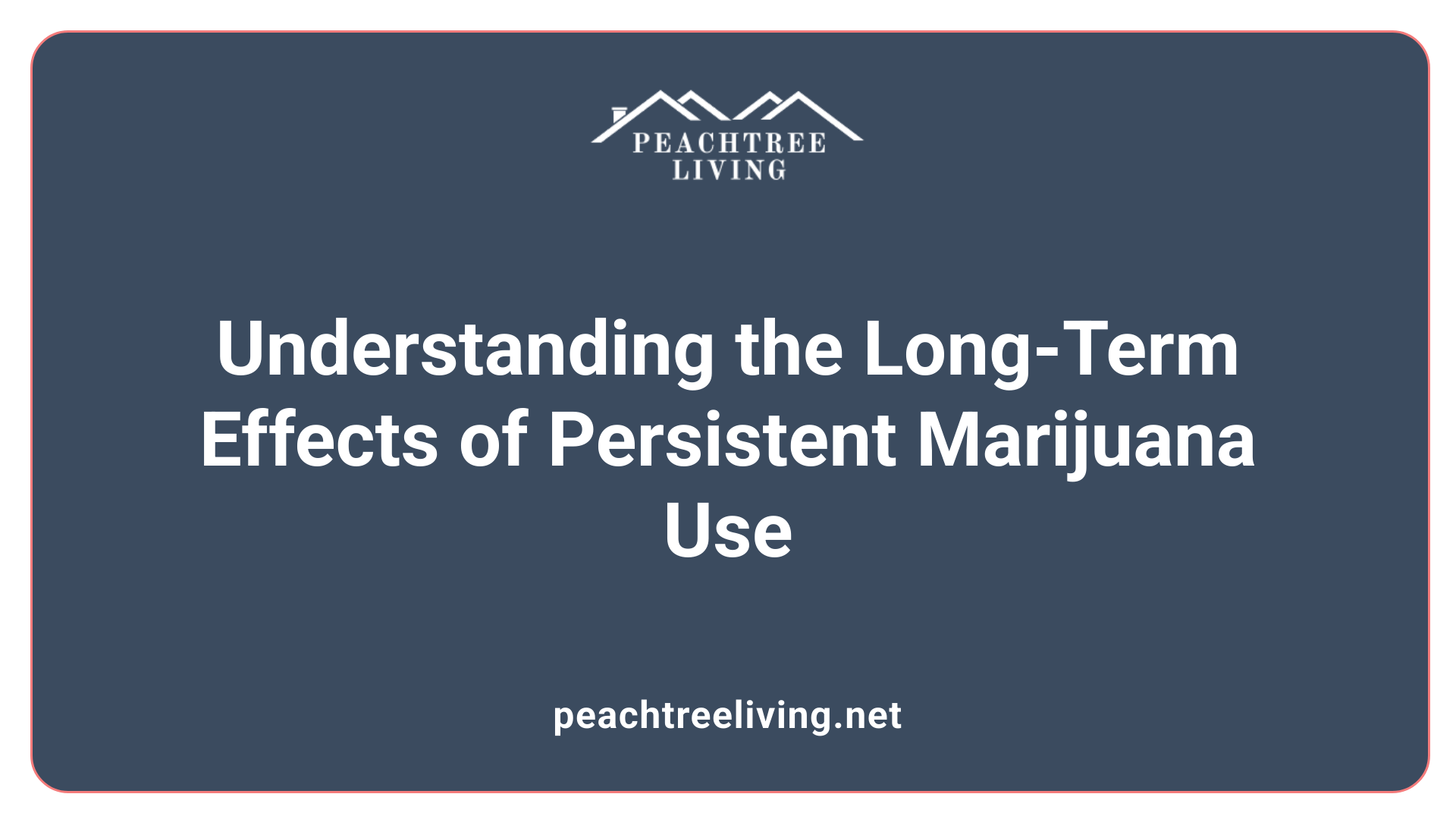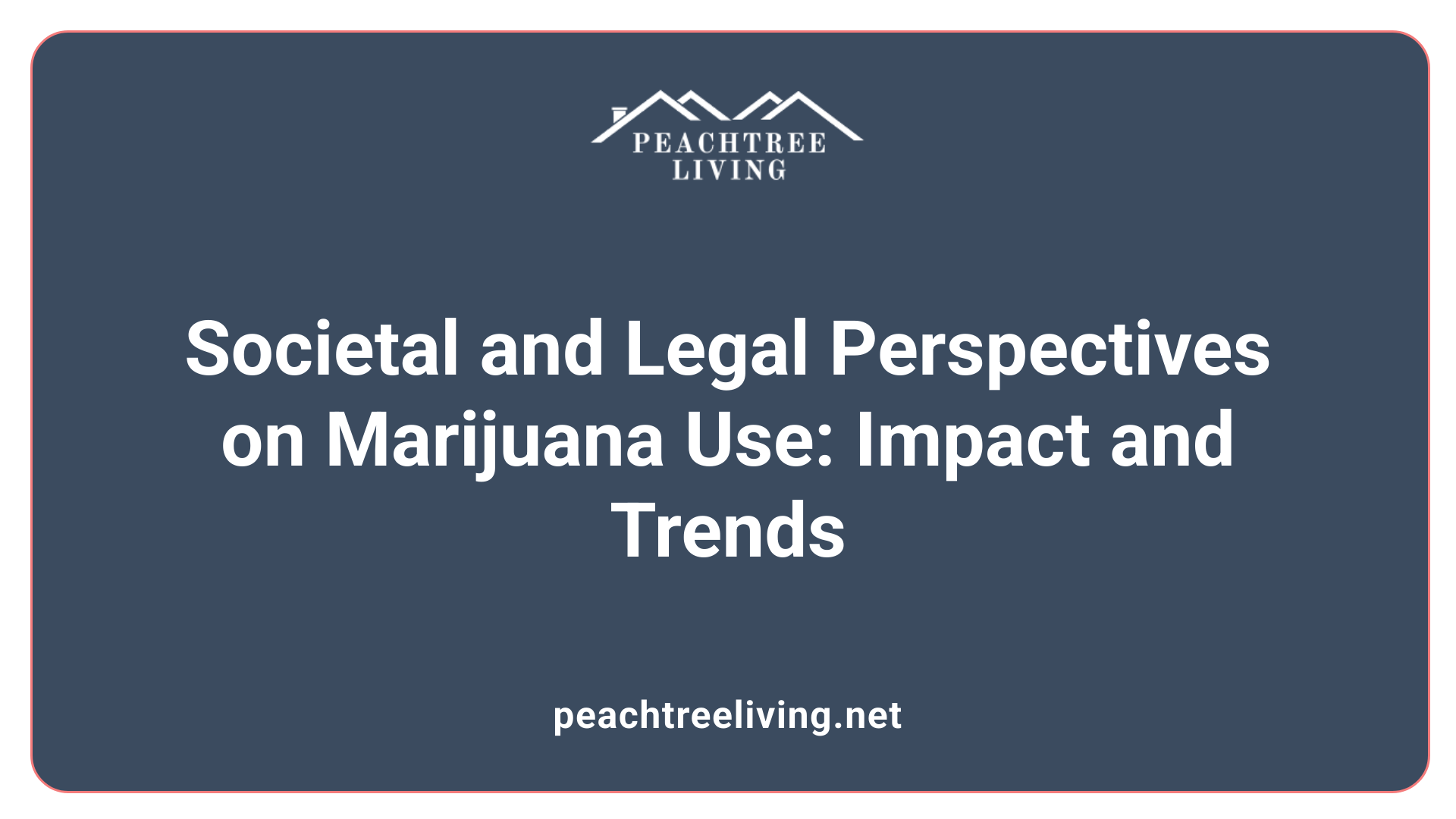An Overview of Marijuana Use and Dependency Trends
Marijuana remains the most widely used illicit drug in the United States, with evolving legal and societal landscapes influencing its consumption patterns. This article explores the latest statistics, health effects, demographic profiles, signs of use disorder, and treatment options associated with marijuana addiction, presenting a comprehensive overview of this complex issue.
Prevalence and Demographic Insights into Marijuana Use

What are some statistics about people who use marijuana?
Marijuana remains the most widely used illicit drug in the United States, with a significant portion of the population engaging with it. Approximately 78 million Americans, or about 29% of the population, have tried marijuana at some point in their lives. Currently, around 55 million adults, which makes up about 16.9% of the adult population, report using marijuana regularly. Of these, about 35 million Americans use it on a monthly basis, which exceeds the number of tobacco smokers.
The use among youth is also notable. Nearly 40% of high school students have experimented with marijuana, and daily use among 12th graders stands at approximately 6%. These figures highlight that marijuana use begins at a young age for many users, increasing the risk of dependency.
Public perception of marijuana has shifted considerably. More than 70% of Americans now believe that marijuana is less risky than alcohol, tobacco, or prescription painkillers. Over recent years, use and societal acceptance have increased markedly. Usage statistics reveal an upward trend over the past decade, with legalization efforts further normalizing marijuana consumption.
This rise in use is reflected in recent data showing that the percentage of Americans aged 12 and older who have used marijuana in the past year is about 19%, with figures continuing to grow as social and legal attitudes shift.
Health Risks and Cognitive Impacts of Marijuana Use

What are the health effects and risks associated with marijuana use and addiction?
Marijuana use can lead to various acute and long-term health issues. Immediately, it impairs memory, learning, reaction time, and coordination, increasing the risk of accidents, particularly in activities like driving. For example, about 19% of teen drivers have admitted to driving under the influence of marijuana, which is a significant safety concern.
Chronic, heavy use, especially starting during adolescence, raises the risk of developing marijuana use disorder, with about 30% of users experiencing some form of dependence. Regular use may cause cognitive decline, with studies suggesting IQ points can drop by up to 8 if use begins early, impacting decision-making and problem-solving abilities.
Mental health issues are also linked to marijuana, including increased risks of depression, anxiety, paranoia, and psychosis, particularly among heavy users. The potency of marijuana has increased over the years, with some products exceeding 40% THC, heightening the dependency potential.
Pregnant women using marijuana put their babies at risk for complications such as low birth weight, preterm birth, and developmental problems. Additionally, accidental ingestion of edibles by children has led to severe overdose symptoms, emphasizing the dangers of unintentional exposure.
Overall, despite growing legalization and acceptance, marijuana's potential health risks—especially regarding dependency, mental health, and fetal development—warrant continued caution and awareness.
How does marijuana affect brain and mental health over time?
Long-term use can alter brain regions responsible for memory, learning, attention, and emotion regulation. Teens and young adults are particularly vulnerable, with early initiation doubling the risk of developing mental health issues.
Studies estimate that up to 30% of marijuana users experience some form of use disorder, and dependence can develop with regular, heavy use. Withdrawal symptoms such as irritability, anxiety, and sleep disturbances are common when users stop, demonstrating physical dependence.
Heavy use of high-THC products is associated with increased risks of psychosis and schizophrenia in susceptible individuals. Moreover, early cannabis use has been linked to lasting cognitive deficits, including IQ reduction.
What are the risks during pregnancy?
Marijuana consumption during pregnancy can harm fetal development, resulting in lower birth weights, premature births, and higher risks of hospitalization or infant mortality. Chemical compounds like THC can pass through breast milk, potentially affecting an infant’s brain development and leading to issues with problem-solving, attention, and behavior.
Children exposed prenatally or through breast milk may experience subtle delays in cognitive functions, highlighting the importance of avoiding marijuana use during pregnancy and lactation.
| Aspect | Impact | Note |
|---|---|---|
| Cognitive Function | Memory, learning, attention | Impaired by regular use, especially starting young |
| Mental Health | Anxiety, depression, psychosis | Increased risk with heavy, early use |
| Pregnancy | Low birth weight, developmental delays | Risk heightened with use during pregnancy |
While marijuana remains legal and widely used, understanding its health and cognitive risks is critical. While some medicinal benefits are recognized, recreational use carries potential dangers, especially for young people and pregnant women.
Long-Term Consequences of Persistent Use

What are the long-term effects of marijuana use?
Long-term marijuana use can have a variety of serious impacts on both mental and physical health. Research has shown that heavy or adolescent initiation of marijuana is linked to cognitive decline, including reductions in IQ by as much as 8 points. It can impair memory, learning, and processing speeds, which may affect daily functioning and academic or career achievement.
In addition to cognitive effects, chronic use is associated with mental health issues such as increased risks of anxiety, depression, and psychosis. Particular concern exists for individuals with a family history of schizophrenia, as marijuana may trigger or worsen symptoms.
Physically, persistent use can cause respiratory problems. Regular smoking of marijuana is linked to chronic bronchitis and a higher chance of lung infections, similar to those caused by tobacco. There is also evidence suggesting a potential increased risk of certain cancers and other health complications.
Long-term cannabis consumption can lead to physical dependence and the development of cannabis use disorder, especially when usage begins before age 18 or involves high-potency products. During pregnancy, long-term use poses risks for fetal development, including lower birth weight and developmental issues.
While some negative effects might improve after stopping use, the severity of health impacts is often related to the age of initiation, frequency, and potency used. Nonetheless, ongoing, heavy marijuana consumption can be detrimental to overall health, quality of life, and cognitive functioning.
Patterns of Use Among Young Adults and Teens

What is the demographic profile of marijuana users?
Marijuana use is most common among young adults aged 18 to 34, making this group the largest audience for cannabis consumption. Within this demographic, males tend to use cannabis more frequently than females, especially at higher frequencies such as daily or weekly use.
Racial differences are also evident. Data shows that Black and Native American individuals report higher rates of frequent and daily marijuana use compared to other racial or ethnic groups.
Socioeconomic factors play a role as well. People with lower educational attainment, particularly those without a college degree, and individuals earning less than $25,000 annually are more likely to engage in regular cannabis use.
Regional variations influence usage patterns. States in the Western U.S., where recreational marijuana is legal, tend to have higher usage rates. This legal environment may reduce barriers to access and influence social attitudes toward cannabis.
Overall, demographic profiles reveal that young adult males, racial minorities, and those from lower socioeconomic backgrounds are more likely to use marijuana frequently, highlighting the importance of targeted education and intervention strategies.
Signs of Marijuana Use Disorder and Identification

What are the signs and symptoms of marijuana use disorder?
Marijuana use disorder manifests through a variety of behavioral, physical, and psychological signs. People with this condition often experience cravings for cannabis and have repeated unsuccessful attempts to cut down or stop using the drug. Despite facing negative consequences, they continue to use, which can interfere with daily responsibilities and relationships.
Behaviorally, individuals may spend excessive amounts of time obtaining, using, or recovering from marijuana. They might neglect work, school, or social activities that were previously important to them, preferring instead to spend their time high or withdrawing from social interactions.
Physically, users may display symptoms such as red, bloodshot eyes, dry mouth, increased hunger, and impaired motor coordination. These physical effects can be subtle but are noticeable upon observation.
Psychological symptoms include mood swings, irritability, anxiety, and depression. Cognitive impairments such as memory problems and difficulty concentrating are also common. Over time, many develop tolerance, needing larger amounts of cannabis to attain the desired effects.
Withdrawal signs can appear if usage is reduced or stopped. These include irritability, sleep disturbances, anxiety, decreased appetite, and craving, often peaking a few days after discontinuation.
Recognizing these signs and symptoms is vital for early intervention. Addressing marijuana use disorder early can improve treatment outcomes and help individuals regain control over their lives.
Treatment Strategies and Support Systems
What are effective treatment options for marijuana addiction?
Treating marijuana addiction involves a combination of approaches tailored to individual needs. The most evidence-based treatments include behavioral therapies such as cognitive-behavioral therapy (CBT). This method helps individuals identify and manage triggers that lead to drug use and develop healthier coping strategies.
Another effective technique is motivational enhancement therapy (MET), which boosts motivation to change by strengthening personal goals and readiness for recovery. Family involvement through approaches like multidimensional family therapy (MDFT) can be particularly beneficial for adolescents, especially when there are co-occurring mental health issues. MDFT improves family dynamics, increases treatment adherence, and reduces dependence symptoms.
Contingency management strategies reward individuals for demonstrable progress, such as abstinence or reduced use, which can motivate continued effort.
While pharmacological treatment options are limited, some medications like nabiximols and dronabinol, which are cannabinoids, have been used to ease withdrawal symptoms. These offer small to moderate benefits. However, medications such as serotonergic antidepressants are not generally recommended due to possible side effects.
Combining behavioral therapies with supportive pharmacotherapy is currently the most promising approach for addressing marijuana dependence. A comprehensive, individualized treatment plan enhances the prospects for successful recovery and long-term abstinence.
Societal Impact and Legal Perspectives on Marijuana Use

What are the societal impacts of marijuana legalization concerning addiction?
Legalization of marijuana has led to a variety of societal outcomes, particularly in the realm of addiction. As more states adopt legal frameworks for recreational and medical use, there has been a notable increase in overall use, especially among adults. Data suggests that around 16.9% of the American population currently uses marijuana, with approximately 55 million adults using it within the past year.
The rise in usage correlates with a slight increase in marijuana use disorder, affecting about 30% of users, and the risk of developing dependence is markedly higher for those who begin using before age 18. Studies estimate that about 9-17% of marijuana users will develop addiction, with the percentage climbing sharply among daily users or early starters.
This uptick in use has contributed to a rise in cannabis use disorder cases, which saw about 4 million people in 2015 alone seeking treatment. Especially concerning is the higher propensity for youth to develop long-term mental health issues, such as psychosis or schizophrenia, linked to early and chronic use.
On the positive side, legalization tends to reduce some social harms—by decreasing illegal market activity and reducing arrests for possession, which historically have disproportionately affected communities of color. Economically, states that have legalized marijuana often see increased tax revenue, new job opportunities, and housing growth.
However, increased availability and social acceptance come with challenges. Concerns about greater health care costs, emergency room visits, impaired driving incidents—particularly among adolescents—pose ongoing public health risks. For example, studies show that marijuana-related emergency visits and driving under the influence have become more common.
In summary, while marijuana legalization offers economic benefits and reduces certain social harms, it complicates public health landscapes by increasing the potential for addiction, mental health issues, and accidents. Effective regulation, public education, and targeted health initiatives are essential to balance these societal impacts.
Addressing the Complexities of Marijuana Dependency
As marijuana legalization expands and societal perceptions shift, understanding the statistics, health impacts, and risk factors associated with marijuana addiction becomes increasingly vital. Public health initiatives, targeted education, and accessible treatment services are essential components in mitigating long-term adverse effects and supporting those affected. Recognizing the signs of use disorder and promoting responsible consumption can help reduce the individual and societal burdens of marijuana dependency, fostering a healthier approach to its evolving role in society.
References
- Marijuana Addiction Statistics [2023]: Usage & Abuse Rates
- Cannabis Facts and Stats - CDC
- Cannabis (Marijuana) | National Institute on Drug Abuse (NIDA)
- Is Marijuana Addictive?: How Addictive is Weed?
- Understanding Your Risk for Cannabis Use Disorder - CDC
- Addiction to cannabis - Canada.ca
- Marijuana Abuse Statistics - Cannabis Use & Abuse Stats (2025)
- Cannabis - World Health Organization (WHO)
- [PDF] Marijuana Teens - National Institute on Drug Abuse
- Marijuana Statistics | Cannabis Use Disorders Facts & Figures

